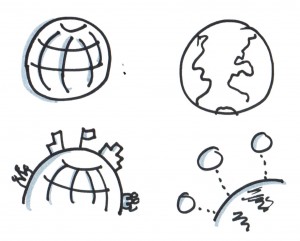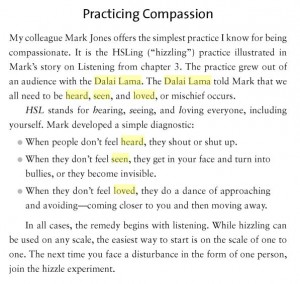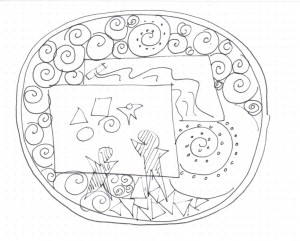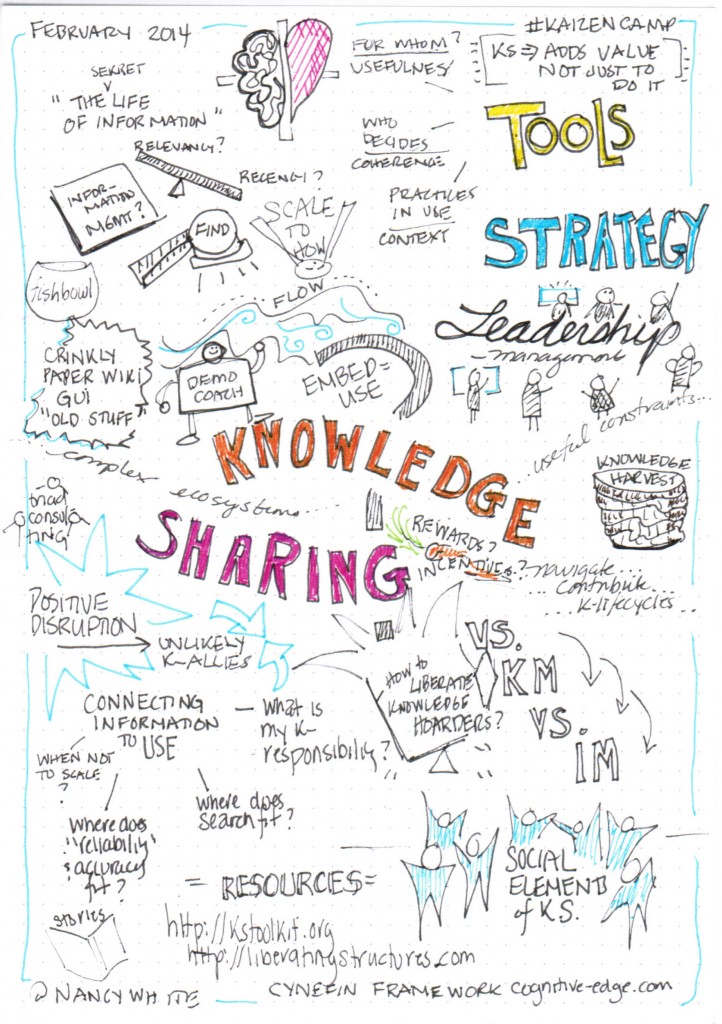 This is the second post in a series about how we learn from our work. The first one can be found here.
This is the second post in a series about how we learn from our work. The first one can be found here.
The great American baseball player/philosopher Yogi Berra, said “You can observe a lot just by watching.”
That quote popped into my mind when I was on a phone call with a group of Bill and Melinda Gates Foundation grantees of the Water, Sanitation and Hygiene program. We were on a great 90 minute call with those working on projects in Africa when one participant shared this story. The following is a total paraphrase!
I received this drawing of a septic tank from one of our colleagues in India. Looking at it, I saw it was a great design, but I closed the email and moved on. A few months later I visited and saw the remarkable tank and realized what a breakthrough it was and thought, why did I just close that email a few months ago? Why didn’t I share it with a colleague in Africa who I knew would be interested? What was it about that face to face moment that crystallized the learning for me?
“You can observe a lot just by watching.” All humor aside, I’d like to greet that with a rousing “Yes, AND…” The AND is that we are getting so programmed for efficiency, and addressing every little blip on the radar screen that we miss the importance of the things we are ostensibly “watching.” When we go into the field, many of those distractions are electronically de-tethered. We focus, focus, focus on what we actually see in front of us. We ARE watching with all of our attention and thus can reflect on the importance of what we are seeing.
So is the solution to simply go into the field? Well, not so practical. Not so sustainable. Sometimes not even possible, especially for anyone lower on the project hierarchy. It is not equitable.
So what do we do?
We are currently initiating two experiments to try and solve this problem. I’ll share the first here, and save the second for a follow up post. (Focus, focus, focus!)
Shared, Open-Topic Conversations
One is the semi-regular, open agenda telephone calls with subgroups of BDS grantees. The calls were initiated by the portfolio leader, as a response to working with the KM team and hearing needs from grantees. By walking the talk, our client is using his leadership position to invite conversation, versus disseminate requirements or content.
So far it feels like having between 8-12 people on the call is a good size. There is enough diversity, but not too many voices so everyone can have some air time and attention. We use a telephone bridge line and a shared note taking/chatting space. (Our “community technology configuration.”) Currently we’ve been experimenting with Meeting Words (http://www.meetingwords.com).
We do a quick check in, then each person is invited to share some insight about their current work. People use chat or voice to ask questions, answer, look for possible collaboration opportunities, but more importantly, pay attention for 90 minutes to thinking across the portfolio, not just within their project.
Because there are others there “listening” to us, we speak and pay attention differently than a quick scan of an email. My sense is that the more we can recreate the sense that we are together, the more this behavior shows up, rather than paying attention with half an ear whilst doing email and reading a note someone in the office just set in front of us. The shared note taking space helps focus attention and offer different means of engagement. We didn’t have it the first call and I personally felt less coherence. (That could just be me.) When we added it for the second call, people did not have to wait for “airtime” to talk – they could type. In addition, I did live note taking in the wiki side of the page and invited others to improve my note taking. In when the links! In went the correct spelling of a report. And we had very useful, collaborative notes ready by the end of the call. Boom!
The turn taking helps stimulate our past experience of being in a room, in a circle together sharing a beer or coffee, and simply talking with each other. It helps the shyer people know there will be a space for them, even if they want to pass. It evens out some of the inevitable power dynamics of funder/grantee, boss/team member.
At the end of the second call we asked ourselves if we found value in the call and the meeting words and the quick informal feedback was very positive. I was even surprised at how positive. What did we do right? What could be improved? We still need to answer these questions.
The final piece of these calls is just starting up – following up with sharing of mentioned resources, setting up follow up actions for pairs with shared needs or interests, and development of asynchronous discussion threads of topics identified as useful for more depth.
My key questions going forward on this include:
- How often do these calls need to be to build sufficient trust and practice to be, and be perceived as valuable and worth the time spent? In other words, what is the heartbeat of this practice? Time is always the scarce resource, so value MUST exceed time spent. This raises the question of what metrics help us understand received and perceived value. Is it important to have metrics or is informal feedback enough?
- How will the proposed follow up items emerge and how will we discern the value of these experiments? Will we succeed in sustaining asynchronous interaction or is that even another step away from the “face to face attention.” Again, what are our metrics?
- Finally, if these calls continue to provide value, who else would benefit from/want to attend? How far away from those in charge of the grants should we go? I personally think we miss a LOT by not having these conversations with front line staff, but it becomes increasingly logistically challenging and time is that darn choke point.
Have you done informal, regular knowledge sharing calls? What have you learned about convening them? Measuring their value? Let me know and I’ll share it back around! Because, after all, you can observe a lot by watching, right? J
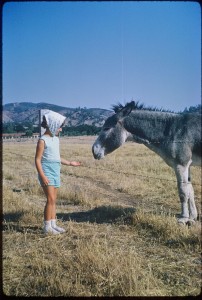 Fear has played an interesting role in my life. Or better said, confronting my fears has given me the opportunity to do things I would have never done before. For example I was afraid to go to Brazil as a 16 year old exchange student for a year, but it was a life changing experience – for the better. I have been afraid to be “unknowing” and vulnerable when facilitating groups, but those have often been pivotal moments. (By the way, the picture is of me there, many many moons ago!)
Fear has played an interesting role in my life. Or better said, confronting my fears has given me the opportunity to do things I would have never done before. For example I was afraid to go to Brazil as a 16 year old exchange student for a year, but it was a life changing experience – for the better. I have been afraid to be “unknowing” and vulnerable when facilitating groups, but those have often been pivotal moments. (By the way, the picture is of me there, many many moons ago!)